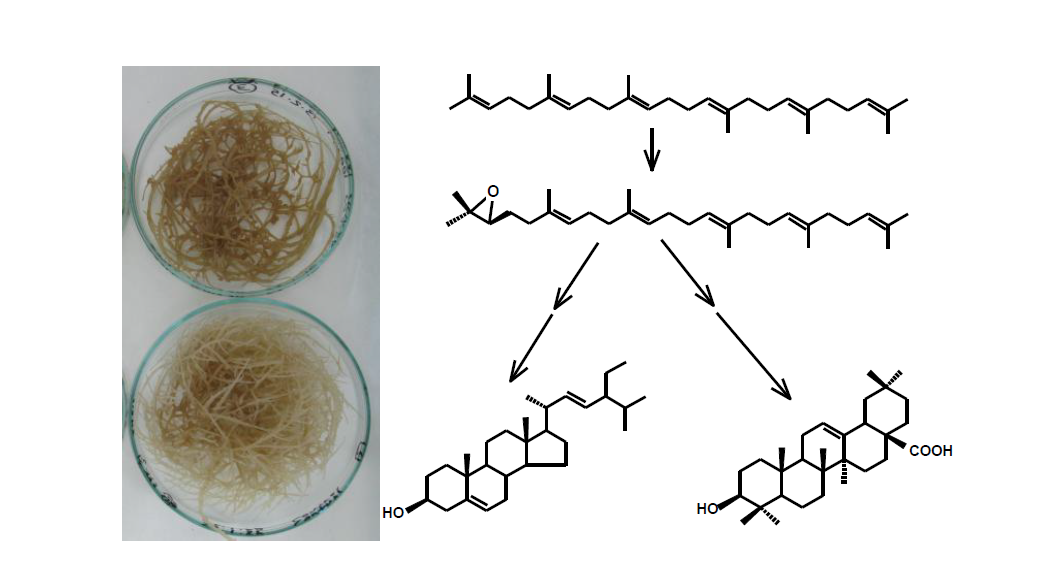The aim of the study was the evaluation of the efficiency of selected abiotic elicitors, i.e. silver and cadmium ions, ultrasound, and UV-C irradiation, in the stimulation of triterpenoid biosynthesis, accumulation, and saponin secretion in Calendula officinalis hairy root cultures. Apart from the possible enhancement of triterpenoid production, the relationship between primary and secondary metabolism (represented respectively by sterols and pentacyclic triterpenes), modifications of the sterol compositional profile, and fluctuations in the total triterpenoid content were monitored in the performed experiments. The main phenomenon observed as a response to heavy metal treatment was the stimulation (up to 12-fold) of the secretion of saponins, accompanied by significant changes in sterol composition. Ultrasound stimulated the secretion of saponins (up to 11-fold); however, it exerted diverse influences on the triterpenoid content in hairy root tissue (stimulating or decreasing) depending on the duration of the exposure to the elicitor. UV-C radiation caused a slight increase in the content of both sterols and saponins in hairy root tissue, and stimulated saponin secretion up to 8.5-fold. The expected symptoms of the competition between the biosynthetic pathways of sterols and pentacyclic triterpenoids were less evident in reactions to abiotic stressors than those reported previously for biotic elicitors

